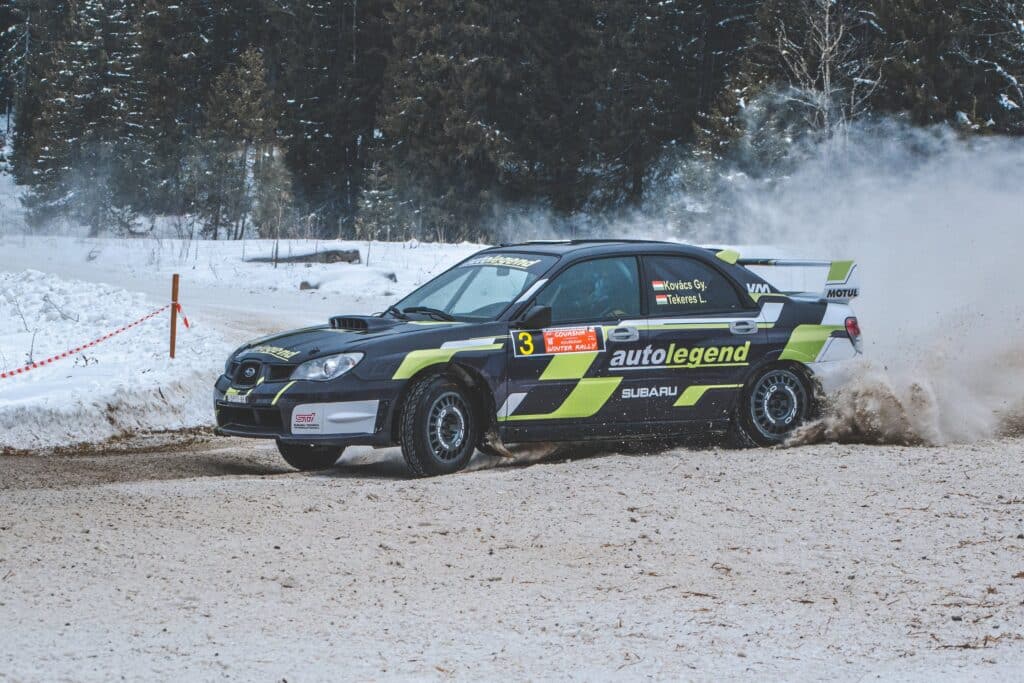News that the Need for Speed title series is being shut down hit motor racing enthusiasts hard, especially as the franchise was one of the first to bring high-quality racing games into the public domain. Instead of getting too upset about it, we thought we’d explore a commonly misunderstood area of motor racing: rally co-drivers. To the casual observer, co-drivers may seem obsolete in the age of GPS, but this couldn’t be further from the truth.
Rally enthusiasts have long enjoyed the at-times frantic instructions issued from the passenger seat in almost unintelligible language. 100 K left 3, 300 square right, 100 caution jump… What does it all mean? And why can’t a modern GPS system achieve the same result? There are a few key reasons why rally co-drivers are still integral to motorsport. Keep reading for an exploration of the fascinating discipline.
What is a rally co-driver?
A rally driver is responsible for completing a stage in the fastest time possible, but without their co-driver, it would be impossible to compete properly. Rally driving is high-octane stuff, and drivers need to have precise directions and stage information while driving at speeds of almost 100mph. There is no way a GPS system could deliver these details with enough speed and clarity. Sure, a GPS can show directions, but it cannot show dips in the road or give easily understood information on the grade of the corner.
A rally co-driver is tasked with writing and delivering a set of “pace notes” to the driver. These are shorthand instructions on the severity of corners and several other aspects of a rally stage. Co-drivers are also tasked with ensuring there is enough fuel to complete the stage, and for effecting minor repairs. All rally teams have an important roster of co-drivers.
History of rally co-drivers
Pacenotes and co-drivers have been an integral part of rally driving since the beginning. In 1955, Sir Stirling Moss and Denis Jenkinson were the first to make a dedicated set of notes when practicing the Mille Miglia road race. They completed the 1,000-mile course in 10 hours, 7 minutes, and 48 seconds, by far the fastest time recorded.
As you might expect, Moss and Jenkinson’s success paved the way for rally co-drivers to become the norm. After 1955, it was commonplace to see a co-driver in the passenger seat taking notes on a pad of paper. The practice still continues today, with co-drivers using paper and a thick pencil to write instructions. Despite all the modern technology, it’s still the most reliable way. The evolution of co-driving is a fascinating topic and one that not many people know much about.
Reasons why GPS isn’t enough for rally drivers
Rally co-drivers are indispensable, but some outsiders will wonder why GPS can’t do the job in the modern day. Technology has evolved impressively quickly over the last few decades. However, satellite navigation systems still aren’t suited to high-speed rally driving and probably never will be. Here are a few reasons why:
- Accuracy: The average person can rely on a GPS to get them from A to B, but this is without detailed instructions on the incline or decline of the road, or the severity of a corner. Pacenotes have precise information on all of this and more.
- Clarity: Rally drivers simply don’t have the time to look at a GPS screen or wait for its instructions. Co-drivers can relay a tremendous amount of information in a very small space of time due to their abbreviated pace notes.
- Other tasks: While their main job is giving instructions, co-drivers are also responsible for other tasks like fuelling or making small repairs. A GPS system would obviously not be able to tackle these extra tasks, which is another reason why it cannot do the job of a rally co-driver.
The benefits of rally co-drivers
There are countless benefits of rally co-drivers. As most successful rally drivers will tell you, their success would be impossible without the instructions coming from the passenger seat. Not only do co-drivers help their drivers navigate rally stages but their simple presence in the car can be a vital source of motivation.
GPS technology is sure to get even better in the future, but we’re not sure we’ll ever see the end of rally co-drivers. They are destined to be an indispensable part of motorsport for years to come.

